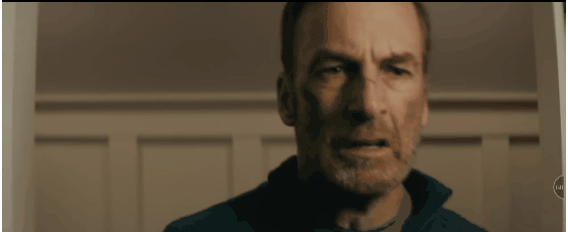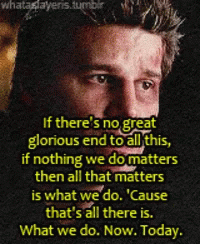To be perfectly honest, I wanted to look at Pointillism this week because I’ve got a bookmarked internet page on my phone I want to get rid of. Despite its deep cleverness & influence, Pointillism is not one of my go-to art genres. It’s one of these “bridging” movements/techniques. I like it when I see it applied in places I’m not expecting & when you can have a properly close look, it’s ingenious. But I’m a monochrome fiend at heart & all those colours are sometimes hard going.
In essence, Pointillism is dots. Millions of dots. They’re painted close together & depend on the viewer’s eye & brain to merge them into lines & form. Divisionism is a similar technique that relies more heavily on colour theory (as well as broader brush marks) & how our eye works to blend the hues, but the two are linked. Like Impressionism, the name Pointillism was initially used as an insult but has grown out of that into an everyday art movement name. Impressionism paved the way for its younger Pointillist sibling.
Quite a long time ago, I read about Betty Acquah somewhere. I’m pretty sure it was my partner that pointed out her work, perhaps on the WomensArt page on Twitter (recommended) but I bookmarked a search on Betty, vowing to get her into a blog at some point (no pun intended). The other day I decided it was high time she did.
I was mostly struck by the fact that anyone was still bothering to use pointillist techniques anymore. It’s been superseded by so many other methods that it surprised me to see people still going to such effort. So as a salute to Betty’s relentless & frankly incredible technique, I’m starting with her. The Pointillists might not have had a blog here without her…
Betty Acquah (b. 1965), Ghana
Child at Heart I (c. 2020?)
Wherever you look, Betty is dubbed a “feminist painter.” That’s fine & it’s very clear she celebrates Ghanaian women in her work, but labels like that are often shorthand for dismissing someone’s ability in favour of their political “agenda.” Many artists of all media have been shoved down that staircase & we know how the art world has loved shelving women in the past. Anyway, one of the greatest of Betty’s achievements as an artist is her ability to create movement on canvas. She takes pointillist techniques a step further on by lengthening the dots into small strokes. This & her knowledge of how colour works enables her to give the impression of her dancers moving. We can see similarities to Vincent van Gogh’s paintings although usually he was depicting emotion rather than movement, to often queasy effect.
Georges Seurat (1859-1891), France
Le Bec du Hoc, Grandchamp (1885)
It was Seurat & Signac that began this whole Neo-Impressionist movement. The works have an illustrative look to them because sometimes the result of using the technique is more defined outlines. Seurat’s paintings are certainly the ones I think of when I think of pointillism for instance “A Sunday Afternoon on the Island of La Grande Jatte” or “Bathers at Asnières”. I always have to look up the titles - you’d know them if you saw them. That said, “Le Bec du Hoc” is a lovely work & I think land/seascapes like this are the best place for Pointillism.
Paul Signac (1863-1935), France
Portrait of Félix Fénéon (1890)
Signac’s portrait is highly coloured, contemporary & hugely unusual for the time. Relying on pattern & shape as well as the pointillist technique, he has cunningly juxtaposed some colour wheel opposites in the swirling composition. Fénéon himself was an art critic as well as an ally of the Pointillists & coined the phrase Neo-Impressionism.
Vincent van Gogh (1853-1890), Netherlands
Self Portrait (1887)
Sometimes of course, Vincent’s use of pointillist technique is undeniable such as in this stunning & profound self portrait. It’s weary, introspective Vincent rather than struggling, psychedelic Vincent. The technique is used to indicate texture rather than movement or desperate expression. As an exciting aside, Paul Signac & Toulouse Lautrec were friends of Vincent’s & when another artist criticised van Gogh, Toulouse Lautrec challenged him to duel. If Lautrec had lost, Signac was ready to step in. Artistic temperament did not prevail & the cad in question made an apology before swords, pistols or paintbrushes were brandished...
Henri-Edmond Cross (1856-1910), France
L’air du soir (c. 1893)
Another friend of Signac, they aimed to create decorative works to celebrate the beauty of their native land. Here Cross has combined classical content & the setting of the sun, with no attempt to create a realistic image.
Georges Lemmen (1865-1916), Belgium
Plage a Heist (c. 1891-92)
Lemmen’s painting reminds me of those sand pictures you can probably still get. You know the ones: a liquid-filled frame is turned & after the coloured sand inside settles, you have a unique “picture” of the layers. His technique here is not subtle but a couple of years later, he used the method to create a beautiful portrait of Mme Lemmen.
Chuck Close (1940-2021), USA
Lucas I (1986-87)
Although there have been few modern artists using pointillism, Close is perhaps the most famous. His “pixelated” style was developed after he suffered a spinal artery collapse in 1988. To some extent, Andy Warhol did something similar in terms of using dots to create a more photographic style.
Hippolyte Petitjean (1854-1929), France
Le Pont Neuf (c. 1912)
There is something fresh, neat & surprisingly contemporary about Petitjean’s painting of Pont Neuf. On a completely unrelated note, on visiting Paris in the early 1990s, I discovered this particular bridge had the cleanest public toilets I’ve ever used.
Alfred Finch (1854-1930), Belgium/UK
The Road to Nieuport (1888)
Yes. When Pointillism does shadows, it can work so brilliantly, as showcased in Finch’s image. I’d query the accuracy of the sheepdog but otherwise, it’s almost a perfect example. Here, the technique matched with the colour unify the composition & his expert knowledge of perspective (sheepdog notwithstanding) is used to great effect.
Jan Toorop (1858-1928), Netherlands/Indonesia
Portrait of Marie Jeanette de Lange (1900)
This portrait is subtle & beautiful & that’s probably all I need to say about it. Have a good look & let it speak for itself.





















































